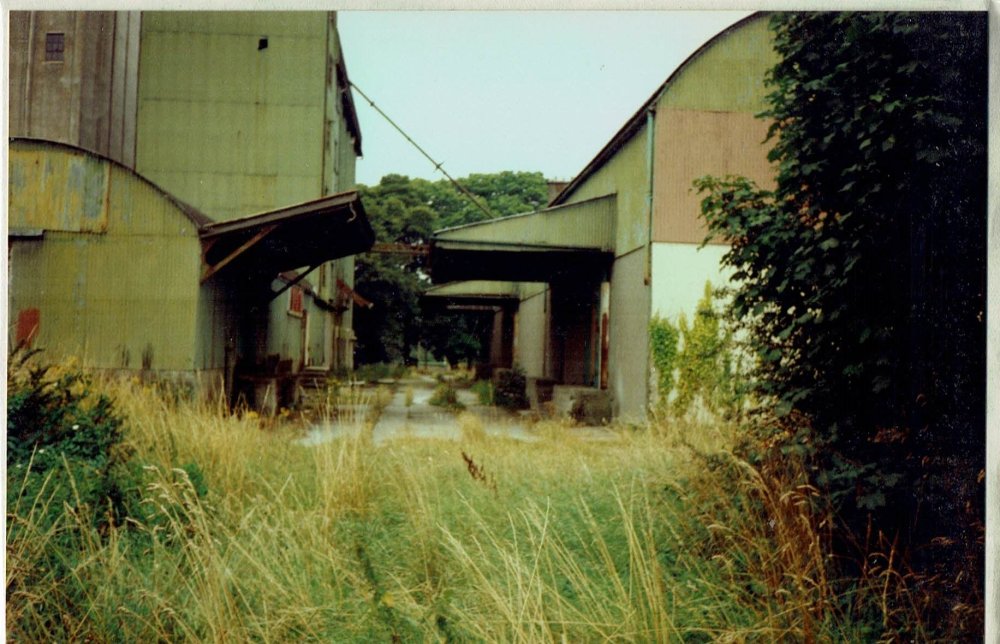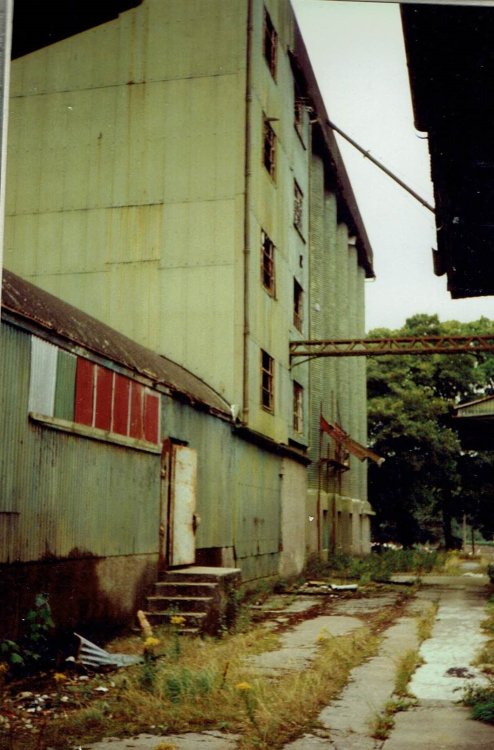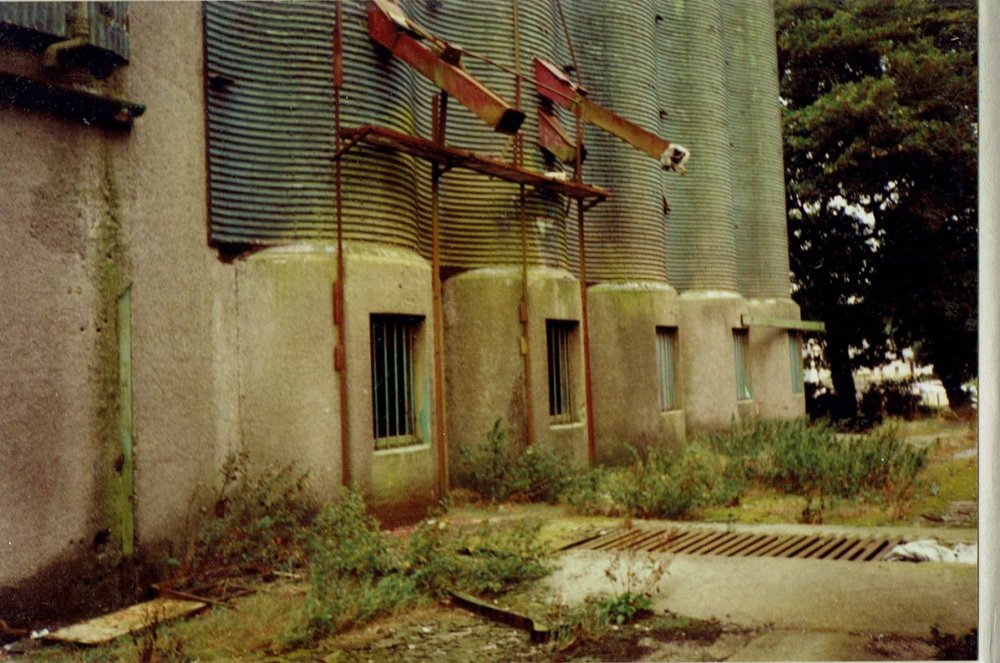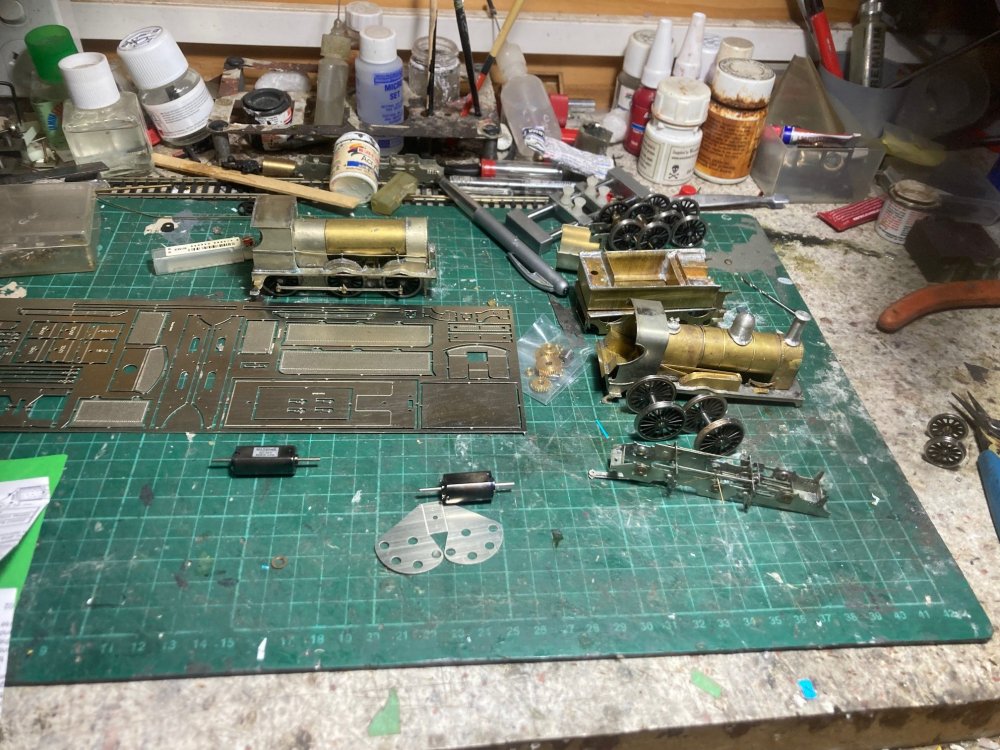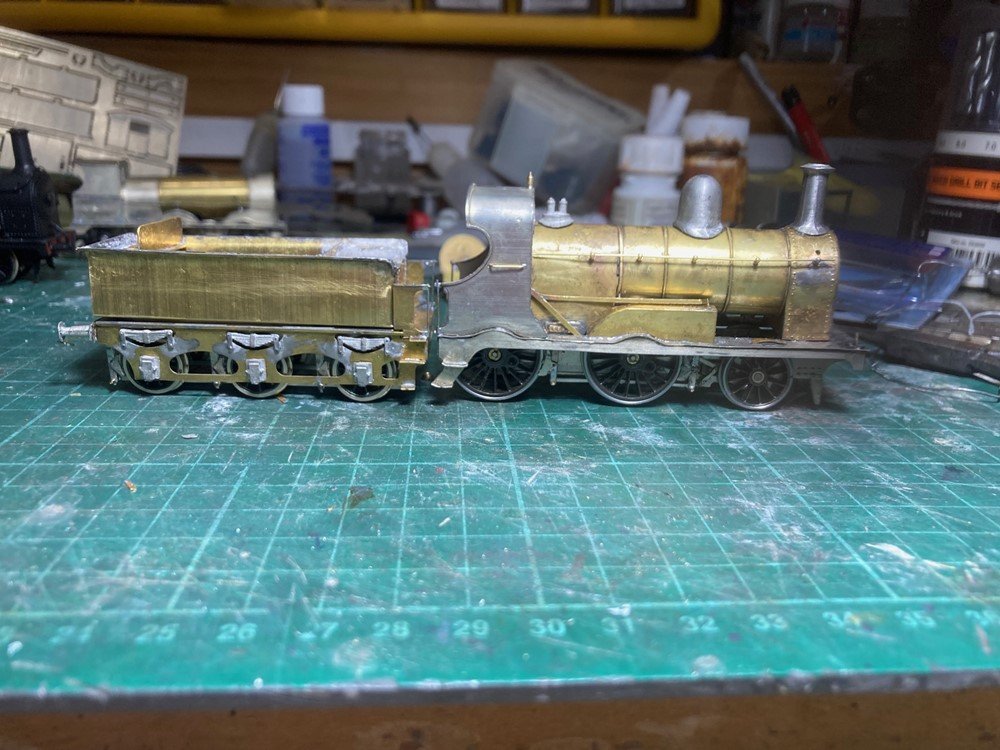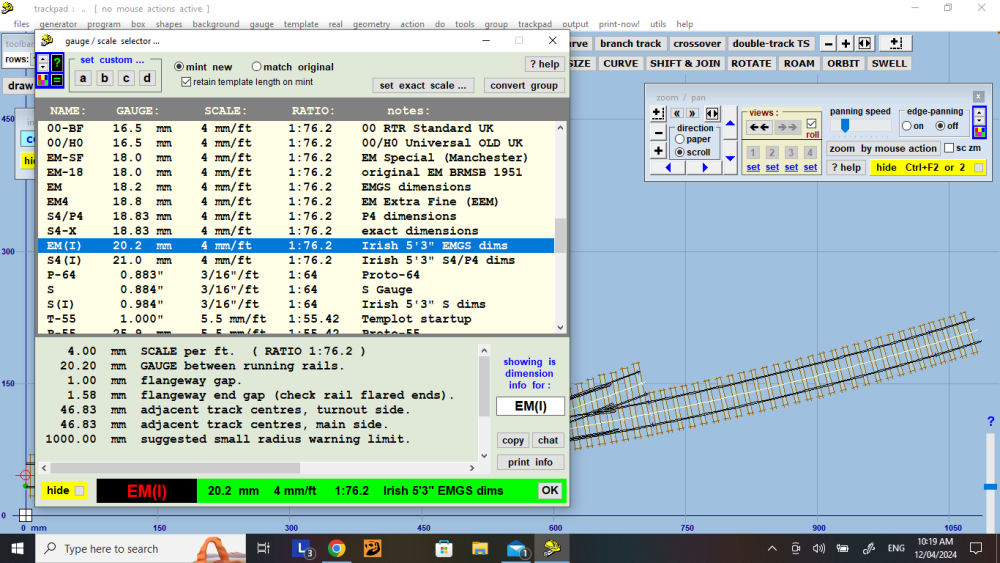-
Posts
4,192 -
Joined
-
Last visited
-
Days Won
96
Content Type
Profiles
Forums
Resource Library
Events
Gallery
Blogs
Store
Community Map
Everything posted by Mayner
-
Have they retained the original seating? There was a lot of criticism of the original seating. The Sunday Cork-Heuston Arrow (stock transfer) had the reputation of being something of an endurance test. Possibly a rail equivalent of enduring the privations of Lough Derg. Perhaps no refreshments on Saturdays leg or the IRRS Railtour and "black tea" only on Sunday's return to the 'Real Capital"
-
The saga of the hotel project and the Gombeen Man did some good as I was headhunted and offered a role as a manager with a company that had impressed me for some time. First project was Project/Site Manager on a large North West Dublin Logistics/Warehousing project where my role was largely co-ordinating things with the designers nd specialist contractors while John our senior engineer and something of a Claude Greengrass character was in day to day charge of the sub-structure works with a team of engineers, direct labour, and specialist contractors. I looked after superstructure works (steel work, cladding, mechanical and electrical services) with a Finishing Foreman in charge of the Office Fit out. John was extremely enterprising individual along with his day job, he provided a taxi service for our team of directly employed workers from Westmeath, installed part of the project's rainwater system on a piece-work rate during weekends and indulged his Greengrass instincts by trapping game and vermin. Setting and checking out the traps did no go down to well with his passengers going to and coming home from work. John would take a diversion to set or check out his traps and some of the lads were a bit squeamish about the dead animals in the back of the van. John got into a spot one day installing a downpipe inside a warehouse at a height of about 12m using a knuckle boom and managed to trap himself between the structure and the cage of the boom, was unable to reach the controls but somehow managed to find a way out despite being the only one on a very large site before the days of reliable cell-phone coverage. I did not acquit myself to well with possibly the same boom after successfully replacing a defective double glazing unit in the project Office Block some time after handover and the Office Block was occupied, I managed to strike and damage the remotely controlled entrance gate to the Office car park with the knuckle boom. One of the clients Directors rang my boss in panic and was told not to worry that I would sort out the problem. Apart from telling me that he received the call my boss never said another word about the incident. We carried out a temporary repair job and operated the gates manually for a couple of weeks before carrying out the permanent repair. During the Final Phase of the project a serious problem arose for the firm of Architect in charge of the project issued a Certificate of Practical Completion to our firm and the Client refused to accept the Final Phase of the project. At literally the last minute the Clients representative identified that one of the staircases in the Office Block breached fire/building regs.. Spent an interesting afternoon walking the Office Block with one of the Architectural Firms senior partners and a copy of the Building/Fire Regs trouble shooting the offending stair case, changing the direction of opening of some fire doors and closing off general access from the staircase to a plant room (chain and a small sign) so it was not classed as part of an escape route. We completed the alterations in a day or so and the client occupied the Final Phase of the project. I guess the Clients Rep could justifiably claim that he had done something to justify his fee. Never found out if we invoiced the firm of architects for the alterations or simply treated as a goodwill gesture to avoid embarrassing the firm and remain on their list of preferred contractors a days wages for a couple of carpenters was small change on a £12m project during the late 90s Unfortunately I did not really appreciate that I was working for a really good company until I jumped ship in pursuit of higher pay 2-3 years later and found myself in a far worse situation, though I guess I would not be where I am today if I did not make that move so there are no regrets.
-

Clogherhead - A GNR(I) Seaside Terminus
Mayner replied to Patrick Davey's topic in Irish Model Layouts
Possibly a watching trains go-by N scale model of the GNR Main Line across the Border or Craigmore Viaduct as a next project if Patrick has the space. Kids used to start counting wagons on goods trains as they emerged from a tunnel/from under a bridge when we exhibited a 13' x 2'6" N Gauge club layout about 40 years ago! Alternatively watching/trying to count cars on American freight trains can help you sleep. Spent a week chasing/photographing trains on Donner in 2001 before we were all abruptly brought back to reality by the 9/11 attacks. -
Likely to have been initially loaded under the large Elevators at Dublin, Waterford and Cork ports and unloaded by gravity at mills around the country, apparently wagons were unloaded through a hole in a road bridge in Limerick and the grain then transhipped by road to Ranks Mill in the Docks. There is also a photo (possibly O'Dea collection) of grain being transhipped from a grain wagon to a truck at Fermoy during the 60s using a portable conveyor The GSR originally built 10 hoppers for its own use and 8 for Ranks traffic during the 1930s, the increase in traffic that lead to CIE converting H Vans to grain wagons likely to be tied up with large scale mechanisation of agriculture in Ireland during the 50s leading to increased grain growing and use of grain as stock feed (Anglo-Irish Free Trade Agreement? Ferns County Wexford seems to have become a significant originating point in the 50 with Ferns-Ballysodare possibly Ardee traffic flows. Grain seems to have been stored for loading in a typical Irish curved roofed agricultural/industrial building as opposed to a silo/elevator at Ferns and loaded through covered conveyors that projected out of the building. Some photos of arrangements for loading/unloading at Clara. Built 1930s quite a contrast with stone mills built during 19th Century Ranks Mill Clara 1990s Elevator on left, drystore? on right, seems to have been 2 siding in this area. Mill Elevator on left smaller building may have been for storing finished product animal feed? before dispatch Close up of loading chutes and discharge point. Looks like the discharge point was set up for unloading trucks after rail traffic ceased during the Mid 70s. Clara an industrial town once relatively busy with freight traffic mainly tied up with the Goodbody family. Jute mill served by a long siding west of the station and Goodbodys later Ranks Mill at the rear of the station and two goods yards with its own pilot loco laterly a G Class
- 32 replies
-
- 13
-

-

-
Interesting seeing IRM announcing the release of the Bulk Grain wagon before announcing the H Van from which its derived. The Bulk Grain variant of the H Van was a relatively rare and camera shy type. Apart from the Wicklow photo accessible on the IRRS Flickr site, there is a photo of two distinct variants of the wagon at Ballysodare Mill in JHBs and Barry Carse's Rails through the West. Stephen's comment of the wagons in a 3 pack retailing in Ireland at €26 each (incl Vat) is an interesting one , it currently costs me €25 (excl vat) to produce 3D printed versions of the GSWR & early CIE versions of the H Van in undecorated-kit form, and illustrates the impossibility of producing kits or quality 3D printed models at a similar price point to plastic injection models. I am not complaining I was aware for several years that IRM were planning to release "Bulleid Wagons" and went down the 3D printed road seeing a narrow window of opportunity to produce a range of pre-Bulleid era wagons before IRM released its range of Bulleid era wagons.
-
Possibly "Webbs Mill" Mallow private siding at Quarterstown off the Mallow-Killarney line. Originally a flour mill later used for handling bitumen traffic closed 1977. There is a Joe St Ledger of a B141 stunting bitumen tanks at the Mill in IRRS Journal 198 Feb 2019 Coach seems to be an ex-GSWR early GSR coach some of which survived into the early 70s. Would make a nice compact shunting module possibly forthcoming IRM Fuel Oil Wagons posing as Bitumen wagons or even H Van or Bulk Grain wagons.
-
The ironical thing is that the Clifden Station is no struggling preservation group but a profitable business that made €437,000 profit last year on a turnover of €6.2m , or returned a 13% profit margin, that could have funded the restoration of the coach from its own resources. The cost of restoring the carriage over the past 20 years would have been quite small change in terms of the cost of operating and maintaining the hotel and tax deductible, quite different from a preservation group attempting to restore a carriage from its own resources or donations. The restored carriage could have been treated an integral part of the hotel in a similar manner to other parts of the hotel such as the swimming pool that don't directly generate revenue or generate revenue rather than an eyesore in the carpark. Applying a bit of lateral thinking the interior of the restored carriage could have been used for storage or even a room for guests.
-

Locomotive 131 on "Sea Breeze"
Mayner replied to Rush and Lusk's topic in What's happening on the network?
In my experience lineside fires are sometimes ignited by burning embers from the ashpan landing by the lineside. A steam loco travelling at speed has an ability to fling embers at some distance from the track, I once spent a day dealing with this problem on a Welsh Narrow gauge line which was almost perfectly flat and speeds did not exceed 10mph. Farmers burning off gorse/dead vegetation in Spring has often been a cause of fires, Spring is usually considered to be the start of the Bush/Wildfire season in Australasia and New South Wales. Perhaps a case for a Gangers Trolley with firefighting equipment following steam hauled trains through a section as they do on the Cumbres and Toltec in the United States, but difficult to apply on account of Irish or UK because of signalling practice/regulation. On the subject of steam trains I found a 2018 trip on a diesel hauled Sea Breeze to and from Wexford in the RPSI Craven set something of an endurance test, while I really enjoyed a WT hauled trip from Connolly to Longford and back using the same coaches in 2005 really enjoyable. Ironically I found driving to Wexford and taking photos of the Sea Breeze in the Vale of Avoca, Enniscorthy and Ferrycarrig on two occasions during the 90s much more enjoyable and relaxing than taking the train. Interesting family seemed to enjoy and appeared to consider 6+ hour journeys travelling on the Silverton and Cumbres and Toltec as a relaxing day out rather than an endurance trip possibly low speed and vintage cars contrasted nicely with our experiences of travelling by train in Ireland and the UK. -

Clogherhead - A GNR(I) Seaside Terminus
Mayner replied to Patrick Davey's topic in Irish Model Layouts
Used a selection of Dart Castings rabbits, ducks, swans etc. to keep viewers interested when exhibiting a small end to end layout 20 odd years ago. The different animal species were listed on the layout fascia. Families with small kits used to get more entertainment out of searching for and counting the rabbits and ducks than watching the trains! Rabbits and ducks have gone into hiding but swans have taken up residence for the past 10-12 years in the river on the Irish Narrow gauge layout -
Going back to the old-old days the Great Northern BUT railcar trains were designed to be divided and combined to serve different destinations. The original 700 Class railcars were double ended with a driving cab at each end. This capability was put to use for a few weeks before the Irish North line closed in September 1957 with a combined BUT operated Belfast-Derry-Enniskillen train. The Enniskillen portion was operated by a single 700 Class railcar towing a vintage clearstory brake end coach, a last hurrah for the Great Northern demonstrating that it was feasible to operate a fast (3hour) Belfast-Enniskillen train despite the Northern Government having already decided to pull the plug. Going back to Ivan's comment about the North Kent trains continuing to divide en-route, the Southern always demonstrated innovative thinking with hybrid electric-diesel operation of Waterloo-Weymouth services long before the term hybrid became popular! Between the late 60s and the mid 80s completion of the 3rd rail electrification through to Weymouth through Waterloo-Weymouth services were electrically powered to Bournemouth by a 4REP unit at the London end of the train pushing-pulling the 4TC non powered units that worked through to Weymouth. The 4REP unit was uncoupled at Bournemouth with a Class 33 diesel working the 4 TC cars push-pull to Weymouth. There were also stories of combined electric and diesel working with 4REP units and Class 33 diesels on the 3rd rail, the 4REP traction motors were re-used in the stylish MK3 based Class 442 units
-
The IE Signalling and Electrical Department demonstrated a degree of innovative and lateral thinking to allow the morning Limerick-Ballybrophy service to split mid-section in the Birdhill-Roscrea Block Section allowing the lead unit to continue to Ballybrophy and the trailing unit to return as the Nenagh-Limerick commuter train. Nenagh was closed as a Block Post with the signal cabin closed and crossing loop lifted in the cuts/rationalisation of the late 80s with the Block Section becoming Birdhill-Roscrea. The S&E people got around the problem of a train splitting mid-section and the rear unit returning to Birdhill while the lead unit continued to Roscrea, by combining 19th Century signalling technology with 21st Century Industrial Safety Interlocking equipment. The Lead Unit was classified as the Train and the Trailing Unit a 'Banker" assisting the 'The Train" to Nenagh in a similar manner to the way Steam Locos and sometimes Diesel railcars banked/assisted trains from Stranorlar to the summit of the Stranorlar-Donegal line in Barnesmore Gap before returning to Stranorlar. The Birdhill-Nenagh 'Banking Staff' may have been an actual 'banking staff that survived from the steam era or possibly specially fabricated for the job, the S&E people managed to interface modern industrial 'safety interlocking" equipment with the existing electric staff instrument at Birdhill to allow the signaler at Birdhill to 'clear' the Birdhill-Roscrea section and release a staff when both the Lead Unit and the Banker had cleared the section. Interestingly the Donegal apparently used to detach railcars from trains in the Barnesmore Gap area to allow staff to cut/harvest turf in the gap, the railcar returning the Stranorlar on the Banking Staff when the days work was done.
-
Funnily enough CIE used to divide and combine the Galway and Mayo AEC railcar powered train at Athlone during the 1st season of operation. The train was initially made up of a pair of 2600 railcars and a pair of 1904-1908 Brake 3rd coaches fitted with the brake compartment fitted out as a driving cab with a single rear window. The Train divided at Athlone with one 2600 railcar and Brake 3rd (nicknamed Mule) continuing to Galway and the second to Westport. Train operate in this format for one season before being replaced with a 6 car train with Galway portion made up of a pair of 2600 cars, an open 3rd and a Buffet Car and Westport portion a pair of 2600 cars, Westport passengers wanting to use the Buffet Car had to travel in the Galway portion between Westland Row and Athlone, or possibly change at an intermediate station. The Galway-Mayo railcar service the Cu na Mara was one of the few prestigious named trains introduced by CIE in the early 50s and may have operated as an non-stop or limited stop service. I remember watching a pair of 158 Class "Super Sprinters" dividing at Ely in the late 80s-early 90s on a Birmingham-East Coast cross-country service possibly with portions to Kings Lynn and Great Yarmouth. A relatively fast frequent service of 156 and 158 Class Super Sprinters livened up previously neglected Cross-Country services in England, Wales and Scotland during the early 90s replacing run-down MK1 loco hauled stock and 1st generation DMUs, great memories of journeys in 158 Super Sprinters on Welsh Borders and in Scotland (commuting and leisure) a far superior train to the Class 156.
-
Recently watched Neil Young and Paul McCartney performing "A Day in the Life" at Glastonbury. Too young to really appreciate either artist in my late teens 50 years ago, but sure relate to their music these days
-
437k Euro down from 763k looks like the Hotel is profitable enough to restore the carriage either as a tax deductible expense in connection with the maintenance of the hotel and its grounds or a donation to a charitable trust dedicated to restoring the carriage say over a 10 year period. Either way it would reduce the investors/shareholders tax liabilities. After all the re-development of the Station into a Hotel-Golf resort is likely t have taken place under one of the Irish Government's tax incentive (money laundering) schemes of the 1990s. Nice idea but unlikely to happen being Ireland
-

A 3d printed 800 class for 00 (and a WLWR goods loco)
Mayner replied to Killian Keane's topic in Irish Models
GSR numbered the ex-Midland locos in the same series as the ex-GSWR locos. One of the ex-Midland locos 141 Limerick withdrawn in 1929 was allocated but did not carry GSR No 233. The other loco 142 Athenry was re-numbered 234 in 1928 was rebuilt with a 'larger round-topped saturated boiler in 1940 or 41 and was withdrawn in 1950. The loco appears with round topped boiler with riveted smokebox and 'built up" Inchacore chimney similar to the other ex WLWR O-6-0s in a 1938 W A Camwell photo of at Colloney. Although grouped in the same GSWR number series as the other ex-WLWR 0-6-0s, 234 was considered to be a different 'Class J17 to the other ex-WLWR 0-6-0s Class J22 and J25 and remained on the Midland a long term resident of Mullingar used o goods trains to Cavan and Longford before being moved to Sligo where it was used for shunting. (GSR Locos Clements and Mc Mahon). The "Midland engines" had 18'X24" cylinders. The "Southern engines" were classified in two classes J25 222-239 had 17"X24" cylinders and J22 235-236 had 17½x24" cylinders, though all three classes looked visually the same in GSWR/GSR condition with round-topped boiler, riveted smokebox and Inchacore chimney. Its said that the GSWR/GSR standardised on two types of round topped boiler for its ex WLWR locos, one type to the tender locos (4-4-0, 2-4-0 and 0-6-0) and another type to its tank locos (4-4-2T, 2-4-2T and 0-4-4T) All the Ex-WLWR 0-6-0 were placed in the same M/L load class regardless of cylinder diameter and were allowed 5-6 wagons less through each section compared with the ex GSWR and Midland "Standard Goods" classes which were rated Load Class J (Decade of Steam IRRS 1972? Donaldson, O'Neill and McDonnell) In brief the three ex-WLWR 0-6-0s ended up looking visually the same doing similar work but divided into 3 different GSR classes all gone by 1951. Nice contrast to a J15 on a layout -

A 3d printed 800 class for 00 (and a WLWR goods loco)
Mayner replied to Killian Keane's topic in Irish Models
The loco posed next to the 800 caught my eye, looks suspiciously like an ex-Waterford Limerick and Western 0-6-0. Nice contrast to the J15 "Standard Goods" a number of these locos survived in service into the late 1940s working goods trains between Limerick-Waterford and Tuam, with another based at Mullingar on the Midland. Presumably intended to fit on an Oxford? Dean Goods chassis. -
Living in the UK 30-40 years ago I used to enjoy driving on the three lane sections of the A5 north of Milton Keynes, you had to go to Ireland to see really crazy driving behaviour. Took a autumn weekend trip home to Ireland via P&O Cairnryan-Larne ferry about 30 years, leisurely trip southwards to Dublin checked out Whitehead and some gricing on the GNR line at Dunleer and Drogheda. Trip back to Scotland was a bit of a rush leaving late afternoon to catch the overnight boat to Scotland. The N1 road North from Drogheda to wards Monaster Boyce was basically a two lane Highway with hard shoulder in either direction. As I overtook an Expressway Bus a "madman" decided to simultaneously overtake me using the southbound Hard Shoulder just as a southbound car appeared in the distance like something from a 'Mad-Max' movie. Our 'madman was unrelenting and just about avoided the southbound car and a nasty smash.
-
Used to often pass through Wendover travelling to or returning from weekend trips to North Wales in my mis-spent 30s volunteering on the narrow gauge and socialising (drinking) with friends, When I wasn't in a rush I preferred to travel cross-country via the old A roads than take the M1-M6-M54 before taking the back-roads through the Tanant Valley and over the Berwyns. Anyway a lot has happened and not happened since my last post on the theme of layout planning in February, it looks like its going to be at least another 1-2 years before I have time available to start work on the 'Garage Layout'. In a way this should force me to decide on my priorities what is important for the next 10 years/time I have left as I get older and catch up with the lack of (deferred) maintenance on the Garden Railway. First step has been to begin work on completing projects that have been cluttering up space in the work bench during the past 6 months, a OO Gauge 650 Class for a customer and a 21mm gauge J15 for myself. Both locos were started a long time ago the Midland 2-4-0 began life as a test etch for the class and being assembled in typical railway fashion with a mixture of original and replacement components, the J15 began life several years ago but is to run with a larger 2370 Gal tender than ran with the prototype loco on Limerick-Sligo goods work. Progress with the 2-4-0 was good and in late March just about ready for mechanical assembly with a trip to the paint shop due after Easter. I planned to tackle the J15 once the 2-4-0 was complete, to be followed a further GSWR 4-4-0, the further GSWR 6w coaches as manageable projects over the next 18 months. At the same time I decided to bight the bullet and replace the 70 odd foot of life expired ties/sleepers and replaced several decayed fence posts that supported a section of the garden railway. Majority of posts replaced and replacement tie/sleeper strip arrived just before Easter before as in the 'best laid plans of mice and man" I haven't been up to doing anything in the workshop or on the garden railway during the past two weeks as a result of problems with my health. Hopefully I will be back in action to replace those ties during the next 3-4 weeks so the track is good enough to run my "live steam' with a nice plume of steam when the weather turns cold in June during the 'Southern Winter" Still it was satisfying working on the 2-4-0 and fence repairs. As I grow older(eye sight and manual dexterity weaken) I don't know if I will stick with 4mm, but there would be a great sense of satisfaction in completing my stock of part/unbuilt models and kits, being a maker and tinkerer there is less of a sense of satisfaction in buying or acquiring a rtr model no matter how good.
-
The Canal with its lock in the foreground certainly captures the atmosphere of the Midland Main line and Liffey Junction. While I have struggled to fit a layout featuring a simple single line 1950-70s era crossing station in 4mm-21mm gauge into an 9'X17'6" space, Paul is planning to fit an S Scale Main Line Junction into a slightly larger space. The choice of the pre-amalgamation era with its use of generally shorter rolling stock than the late GSR-CIE era helps, the mock up of the Kerry Bogie its 4 6w coaches and horse box works well visually, where a 4mm consist of 071 diesel loco and 5-6 MK2D coaches may not work as well visually. After 30 odd years building/adding CIE era stock, I have began to backdate to the GSR era with its shorter passenger trains and greater use of shorter coaching stock. I have a preference for "eye-level" baseboard height starting with a Irish N scale "around the wall" shelf layout in the early 80s. Track level on my Irish 4mm narrow gauge layout is 1.5m or approx. 4'11, the height in this case was set to clear a computer desk as opposed to deciding on 1.5m. The planned garage layout will have a similar viewing height but at this stage its unlikely that I will have time to work on the layout for another 1-2 years during which a lot could happen. I admire Pauls determination to get trains running on Broombridge by the end of this year. Importantly my 'eye level" layouts were all intended for home as opposed to exhibition operation, the narrow gauge uses plain old analogue control with a Guagemaster hand held controller that plugs into sockets at various locations on the layout fascia, I will probably use a similar set up on the broad gauge layout if I ever get round to it, its too much hassle fitting DCC decoders to locos built from kits and scratchbuilt years ago, Functions like working marker lamps are largely irrelevant on steam locos and my hearing is largely shot to enjoy dcc sound (went theough that fad 20 years ago) My preference is for B&B couplers of the British variety from my experiences in EM and Kadee although totally non-prototypical from over 5 years working on and operating the MRSI Loughrea layout at exhibitions, my Irish 4mm narrow gauge layout uses Kadee HOn3 couplers though automatic uncoupling is not 100% reliable, I may fit B&Bs if I find time/get round to it.
-

Would you model in 21mm if RTR track and models were readily available?
Mayner replied to BosKonay's topic in Irish Models
An important factor to consider is that Templot uses different track gauges for "Irish 5'3" depending on whether you model to EMGS or S4/P4 dimensions. Specifying a gauge of 20.2 for EM(I) and 21mm for S4 (I) Martins rationale for using a narrower than prototypical track gauge for EM(I) may have been based on providing adequate running clearances for wider than scale wheels in loco and stock bodies in a similar manner to the choice of 18 and later 18.2mm rather than the more accurate 18.83 to model the British Standard gauge during the 1940/50s or possibly Martin simply adding 2mm to EMGS dimensions in a similar manner to Martins subtraction of 2mm from EMGS in advocating 16.2 mm gauge in order to achieve improved running than 16.5 for OO gauge rtr models. -
Bit like a story of one of my aunts as a young woman being 'chatted up' and followed by a driver of a CIE bus who was so besotted he took the wrong turn at Harolds Cross Park and had to back-up with a busload of passengers. I guess we were all young once!
-
Back in the day on a sunny summer morning walking the top level of a scaffold of a round a house I noticed a beautiful girl walking by on the street below and suddenly found myself walking in thin air! luckily I grabbed on to a scaffold standard and lived to tell the tale getting away with a few bruises and learned to keep my wits about me regardless of the temptation! This was back in the days when 'I was learning the trade" guardrails and toe boards on scaffolds and any formal though of safety were unknown you could easily "walk off" a scaffold if you wern't 100% alert, yet working for the same firm building several hundred houses serious accidents were practically unknown.
-
Looking back apart from the drama that was going on in the background with the license holder of the 'building system" the project ran smoothly at site level with the exception of one potentially serious incident. The metal framing system was accurate, components arrived on time and everything fitted accurately co-ordinating with brickwork modules and aluminium glazing system often a serious problem on large projects. The building was four storey with concrete floors supported by the steel structure on a metal decking system that was supposed to be self supporting, I had come across similar systems in the UK that used a lightweight concrete topping but not with a dense concrete topping. Unconvinced that the decking would be self supporting I ordered in props while waiting the paperwork from our Lead Contractor that the floor was self supporting. Armed with the paperwork we started to pour the first floor of the building without propping, the concrete gang noticed the decking had began to deflect in one area, we paused the pour to install the propping and resumed the pour after 1 hour and used propping on the remaining three floors while the powers that be argued over who would pay for the propping. Ironically I investigated two floor collapses involving similar flooring systems while working in Health and Safety (Ireland and New Zealand) one as a result of inadequate propping one as a result of inadequate design, luckily no one was killed or seriously injured in either incident though it was a close thing. The Irish case (which involved my former employer on the hotel project) resulted in a successful prosecution of the contractor who installed the propping the New Zealand case a change in the Design Code for Composite Floors. One near miss and investigating two collapses leads me to take nothing for granted and to look upwards when it comes to building and construction.
-
As far as I remember IRM ordered the initial order of Ballast Wagons through an established UK "Commissioner" or agent, but ended up having to deal directly with the Chinese Factory because of problems with their agent. In the end it was simpler and more effective to deal directly with the Chinese factory (whose staff speak English) by phone from Ireland than working with middle men in the UK and China. Going back to Murphy Models 'excess production" being flogged on e-Bay in common with standard manufacturing process the Chinese model train factories manufacture above the quantity ordered by MM to cover manufacturing defects and returns, on an order of 1000 items you could potentially be looking at an additional 50-100 items based on the factories QA system. These 50-100 additional models may be mint boxed as opposed to seconds. It looks suspiciously like the factory held on the the 'additional' production for a couple of years to cover potential warranty claims before selling the 'surplus" to an on-line Trader. The case of the Cravens being flogged by a Spanish on-line Trader may be a case of a stock clearance by a large retailer. A bit like Palitoy/GMR in the 1980s MM may have over estimated demand for the Craven Coaches resulting in retailers ending up with slow selling stock, while ahead of Hornby in terms of detail Palitoy/General Mills basically flooded the UK market with slow selling locos and stock in the early 80s which took several years to clear. Although I did not buy an 071 or Cravens when originally introduced I managed to pick up an 071 and several Cravens on special offer well below the RRP from Marks Models several years after their initial release. Similarly MM effectively had a 'clearance sale" of Craven and MK2 Stock on the IRM Website possibly to free working capital and space in the warehouse for the arrival of the 121s, reinforces that the 'Spanish Cravens" may have been a retailer clearing stock as opposed to a Chinese factory holding stock to 'age" taking up space and eating up working capital
-
As far as I recall the 2600 Railcars were originally commonly know as Arrows because of the Arrow branding of the new Heuston-Kildare Commuter services and nicknamed Jarrows (Japanese Arrows) when the 2700 Sparrow (Spanish Arrow) railcars were introduced for GN Line outer suburban services. The Sparrows (Alstom) and their DART equivalent apparently had a lot of reliability issues, the Sparrows were replaced by the 2900 on Dublin suburban services, the Sparrows transferred to less demanding duties in Limerick and Alstom railcars and EMUs stored have been 'stored' for many years
.png.c363cdf5c3fb7955cd92a55eb6dbbae0.png)

